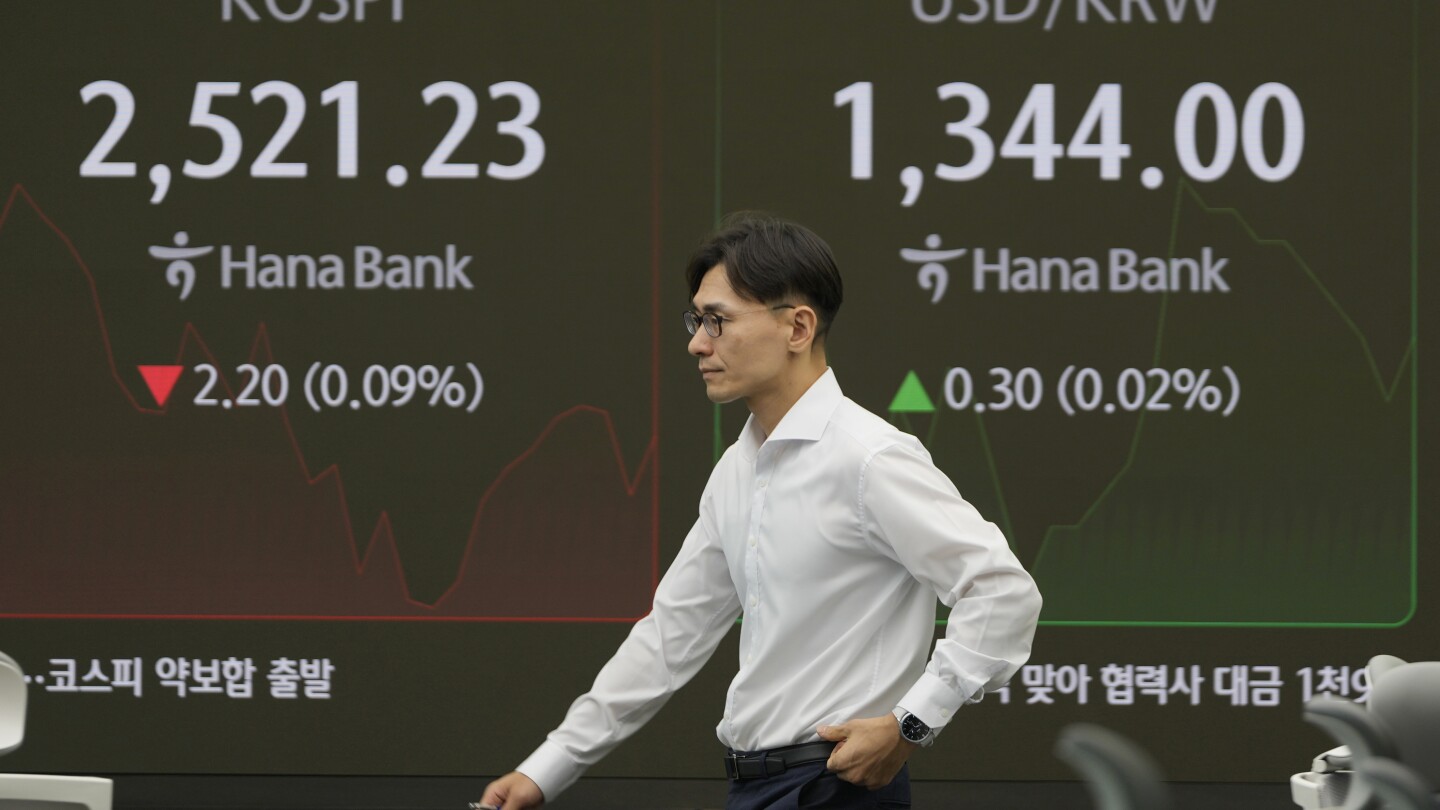TOKYO (AP) — Asian shares traded mostly lower Wednesday after Wall Street drifted to a mixed finish.
Investors were watching for any market impact from the debate between the U.S. presidential candidates, Vice President Kamala Harris and former President Donald Trump.
The value of the U.S. dollar has increased against peers in the past when expectations for a Trump reelection have strengthened, among other moves that have come to be known as part of the “Trump trade,” due in part to his calling for tariffs.
In currency trading, the U.S. dollar fell to 141.72 Japanese yen from 142.41 yen. The euro cost $1.1036, up from $1.1023.
Japan’s benchmark Nikkei 225 lost 0.8% in morning trading to 35,867.33, while Australia’s S&P/ASX 200 lost 0.3% to 7,989.90.
South Korea’s Kospi slipped 0.2% to 2,517.44 after data showed the seasonally adjusted unemployment rate in the nation edged down to 2.4% in August 2024 from 2.5% in July, the lowest in a year as the number of unemployed people declined.
Hong Kong’s Hang Seng dipped 1.5% to 16,984.02, while the Shanghai Composite slipped 0.8% to 2,719.73.
On Wall Street, the S&P 500 rose 0.4% to pull within 3% of its record set in July.
It flipped between small gains and losses through the day, but mild compared to its careens since the summer, driven by worries about the slowing U.S. economy and whether expected cuts to interest rates will keep it out of a possible recession.
The Dow Jones Industrial Average fell 92 points, or 0.2%, and the Nasdaq composite rose 0.8%.
Big Tech stocks helped drive indexes, but bank issues weighed on the market following discouraging comments from several executives at an industry conference.
All told, the S&P 500 rose 24.47 points to 5,495.52. The Dow dropped 92.63 to 40,736.96, and the Nasdaq composite added 141.28 to 17,025.88.
In the bond market, Treasury yields eased. The yield on the 10-year Treasury fell to 3.64% from 3.70% late Monday.
Like stocks, Treasury yields have been swinging sharply ahead of the Federal Reserve’s meeting next week, where the widespread expectation is for it to cut its main interest rate for the first time since the COVID crash of 2020.
The Fed is turning its focus away from stifling high inflation and toward protecting the economy. The debate on Wall Street is focused on how much the Fed will cut the federal funds rate, which has been sitting at a two-decade high.
Reports coming this week on U.S. inflation could influence the size of the Fed’s upcoming cuts. The worst case for the Fed would be if inflation were to reaccelerate when the job market is weakening, because helping either of those would require opposing moves.
Economists expect the latest report on inflation to show prices for U.S. consumers were 2.6% higher in August than a year earlier. That would be a slowdown from July’s inflation rate of 2.9%
In energy trading, benchmark U.S. crude rose 46 cents to $66.21 a barrel. Brent crude, the international standard, which is near its lowest price since 2021, gained 43 cents to $69.62 a barrel.
___
AP Business Writer Stan Choe contributed.

